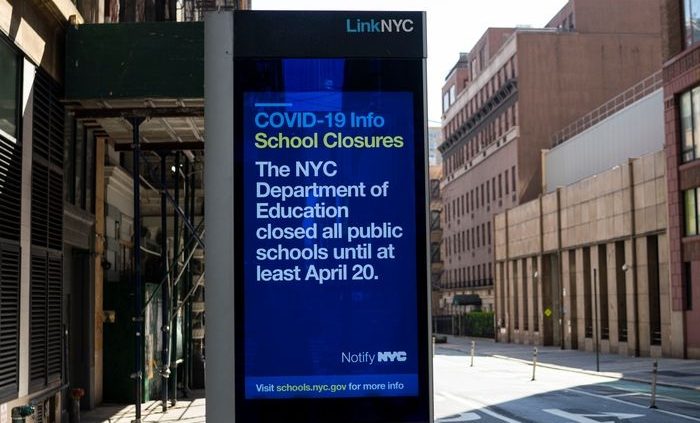Crisis Simulations: Why practice can make all the difference
Imagine taking your driver’s test without ever having driven a car or taken a driver’s education course. You’d more likely end up straddled on a curb with a dented bumper than passing the test with flying colors, right?
Had you practiced beforehand, you almost certainly would perform better in your road test. Why? Because practice gives you the opportunity to make adjustments and address issues that will improve your performance when it really matters. The same principle applies to crises, or events that threaten an organization’s reputation, assets, operations, and other measures of competitive advantage.
Crisis simulations are training exercises where fictional crisis scenarios are presented to test a leadership team’s ability to follow their crisis plan faithfully and respond to a crisis effectively. Simulations can test different aspects of crisis response, like a team’s ability to follow their respective roles and responsibilities and make key decisions in a timely manner. The insights gained from these exercises can be used to improve an organization’s crisis response processes before an actual crisis happens.
However, the value to be gained – or lost – from crisis simulations hinges on the leadership’s willingness and ability to apply the insights such exercises reveal, before real problems arise.
For example, a Business Insider article dated March 19, 2020, details how in 2019, “the Trump administration held a training simulation on a hypothetical pandemic that predicted, with remarkable accuracy, many of the problems the novel coronavirus currently poses.” An after-action report from the exercise identified many of the issues that ultimately plagued the Trump administration throughout its response to the virus last year, including complications around vaccine rollout and school closures.

A crisis simulation led by the Department of Health & Human Services in 2019 predicted many of the complications the Trump administration faced throughout 2020, including difficulties around school closures.
In short, crisis simulations can be extremely valuable learning opportunities for leadership teams to gain insights into their organization’s vulnerabilities and to make adjustments to processes (in some cases, life- or career-saving ones) while time still allows – if these exercises are taken seriously by leadership.
So, how can you ensure your organization gets the maximum benefit from a crisis simulation? Here are four tips to help you do just that:
1) Clearly identify the desired learning objectives of the exercise. Different organizations have different needs and levels of experience in addressing crises. The desired learning objectives of the exercise should align with these needs, as well as take into account lessons learned from previous simulations. For example, a leadership team with no simulation experience may simply want to measure their ability to accurately follow their crisis plan. A team with more experience will likely want to be assessed on more specific performance elements, like their ability to coordinate with overseas teams in a crisis with international implications, such as a cyberattack or supply chain disruption.
HOW TO DO IT: Have a planning discussion with the person responsible for approving the exercise (likely the CEO or some other C-suite level leader) to understand where the organization is most vulnerable, or where insights are most needed. There can be, and often is, more than one desired learning outcome. The best practice is to design a fictional crisis scenario to meet these stated objectives. Another approach is to hire an outside crisis simulation specialist to help you develop and conduct the exercise.
2) Establish role clarity for exercise participants. Chaos and confusion are normal parts of a crisis that make it difficult to think and act clearly. This is why role clarity is an essential aspect of operational readiness in a crisis. Establishing which functional roles (e.g., Chief Legal Counsel; head of human resources) are responsible for which components of the crisis response (e.g., responding to media inquiries; notifying business partners) before the exercise is essential for testing operational readiness and promoting productive engagement during the exercise.
HOW TO DO IT: Again, a pre-exercise planning discussion with the participants to establish 1) what is being assessed in the exercise and 2) what each functional role’s corresponding responsibilities are will allow for effective testing of operational readiness.
3) Make the exercise feel as real as possible. There’s the old saying that history has a way of repeating itself. The same is true for crises in that they follow predictable patterns. There is always stress and confusion, especially in the earliest stages of a crisis when events and information are breaking. Researching past crises, and news and social media coverage of them, will provide useful inspiration in crafting the details and a realistic timeline for a crisis scenario.
HOW TO DO IT: There are a number of ways to mimic the stress and chaos of a crisis. But the single most effective strategy for manufacturing the chaos of a crisis is to ensure that as many of the exercise participants know as little as possible (ideally, nothing) in advance of the exercise about the crisis scenario. Very rarely, if ever, do organizations know exactly when, what, and how a crisis will unfold. Keeping exercise participants “blind” beforehand will help mirror the confusion that exists in a real crisis.
4) Capture what happens in the exercise in real-time. This is a simple yet essential component to an effective simulation. In order to harvest the insights that will ultimately help the organization improve its crisis response, the real-time decisions, disagreements, and distractions that happen in a simulation need to be recorded: what the team did well, who made key decisions, when were those decisions made, where the team got distracted, etc.
HOW TO DO IT: Appointing a designated notetaker or simply recording the exercise are effective ways to capture the real-time performance of the leadership team in the exercise. The more detailed the notes, the more fruitful the insights the exercise reveals will be.
The Key Takeaway
Take these steps, and you can design a crisis simulation that will help you and your team be ready for your next real-life crisis.
At Logos Consulting Group, we help our clients make the critical business decisions that can prevent, mitigate damage or recover from an event that threatens reputation, assets, and operations.
Our distinctive approach is to help leaders accurately diagnose the challenges facing them and make more strategic decisions to manage those challenges.
We help establish early warning systems to know when a choice may need to be made, as well as structures and processes to prevent crises from happening and to respond effectively when they do.
We help clients establish decision criteria to ensure that the right choices are made at the right time. And we help ensure ongoing readiness so that companies can minimize the impact of a crisis early enough to maintain their competitive position.
If you found this blog helpful and would like to take the next step to attain crisis readiness, we’re here to help!
Visit https://logosconsulting.net/our-work/crisis-management/ or email us at [email protected] to learn more.



